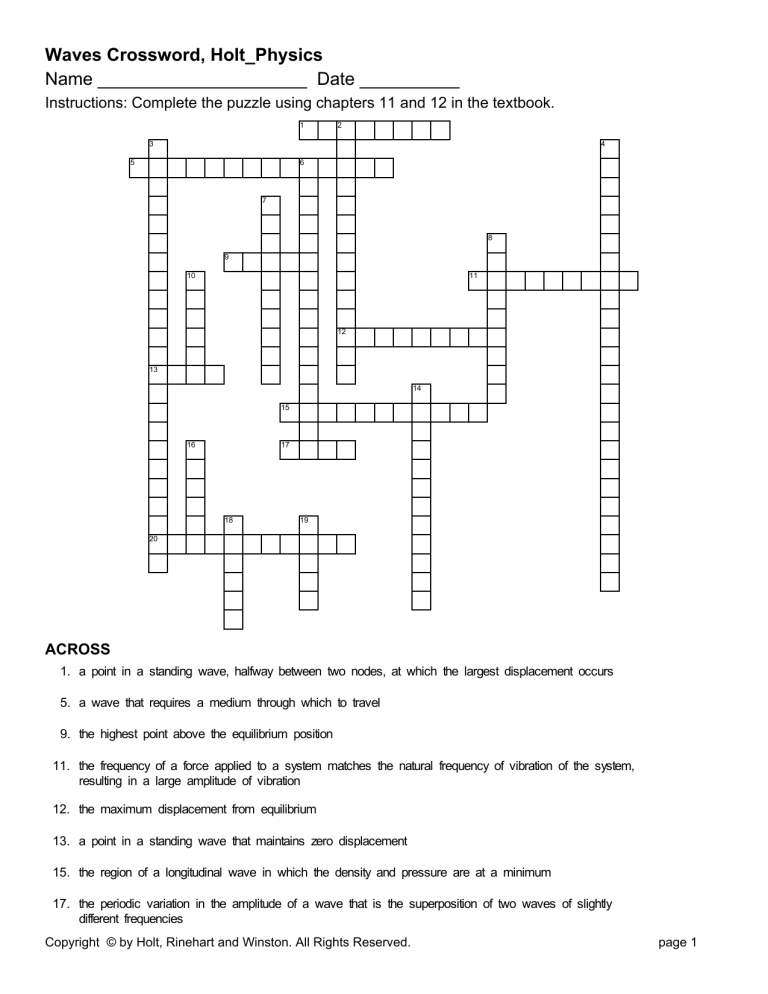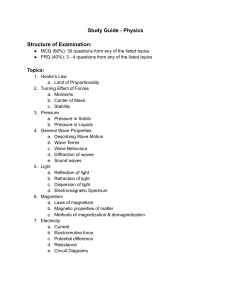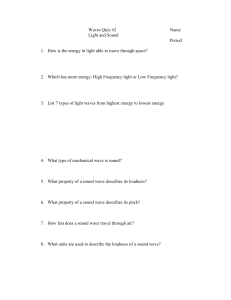
Waves Crossword, Holt_Physics Name _____________________ Date __________ Instructions: Complete the puzzle using chapters 11 and 12 in the textbook. 1 2 3 4 5 6 7 8 9 10 11 12 13 14 15 16 17 18 19 20 ACROSS 1. a point in a standing wave, halfway between two nodes, at which the largest displacement occurs 5. a wave that requires a medium through which to travel 9. the highest point above the equilibrium position 11. the frequency of a force applied to a system matches the natural frequency of vibration of the system, resulting in a large amplitude of vibration 12. the maximum displacement from equilibrium 13. a point in a standing wave that maintains zero displacement 15. the region of a longitudinal wave in which the density and pressure are at a minimum 17. the periodic variation in the amplitude of a wave that is the superposition of two waves of slightly different frequencies Copyright © by Holt, Rinehart and Winston. All Rights Reserved. page 1 20. the region of a longitudinal wave in which the density and pressure are at a maximum DOWN 2. a wave whose particles vibrate perpendicularly to the direction the wave is traveling 3. a superposition in which individual displacements on opposite sides of the equilibrium position are added together to form the resultant wave 4. a superposition in which individual displacements on the same side of the equilibrium position are added together to form the resultant wave 6. a wave whose particles vibrate parallel to the direction the wave is traveling 7. the distance between two adjacent similar points of a wave, such as from crest to crest or from trough to trough 8. the number of cycles or vibrations per unit of time; also the number of waves produced per unit of time 10. the time that it takes a complete cycle or wave oscillation to occur 14. a wave pattern that results when two waves of the same frequency, wavelength, and amplitude travel in opposite directions and interfere 16. a physical environment through which a disturbance can travel 18. the lowest point below the equilibrium position 19. a measure of how high or low a sound is perceived to be, depending on the frequency of the sound wave Copyright © by Holt, Rinehart and Winston. All Rights Reserved. page 2







